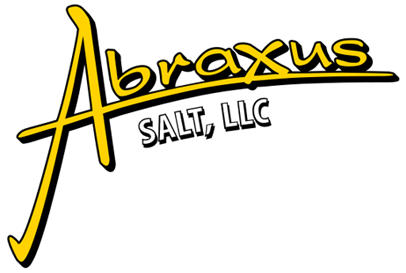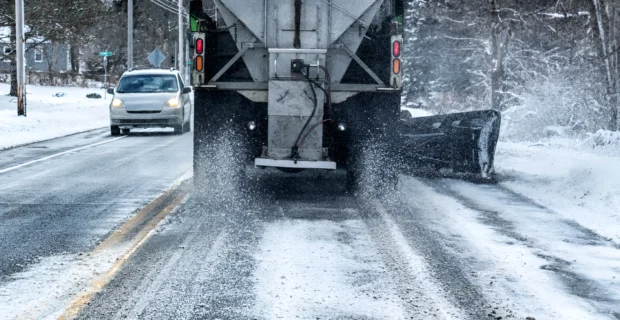Storm Ready: How to Prep Your Crew and Equipment with Salt in Mind
When winter weather hits, the success of your snow and ice management operation depends on preparation. Salting isn’t just a finishing touch—it’s one of the most critical parts of your entire response plan. Being proactive with your salt strategy helps you save time, protect equipment, reduce liability, and keep your clients’ properties safe. At Abraxus Salt, we know that being storm ready is more than just having salt on hand—it’s about having the right processes, products, and people in place.
In this guide, we’ll walk through how to prepare your crew, your equipment, and your salt supply so you can tackle every storm with confidence.
Start with a Solid Salt Strategy
Before the first flake falls, you should have a complete salting plan tailored to your operation. Ask yourself these key questions:
– What type of salt or de-icer do you use? (Bulk rock salt, treated salt, brine, or specialty blends)
– How much product do you typically need per event? Review last season’s usage to estimate demand.
– Where will your supply come from? Secure a reliable supplier early—like Abraxus Salt—to ensure availability during peak weather events.
– How is salt integrated into your snow removal workflow? Pre-treating before snow hits often reduces ice bonding and makes plowing more efficient.
A clear plan ensures you never scramble for material mid-storm. Having a partnership with a trusted supplier means you can focus on operations instead of worrying about inventory.
Train Your Crew for Salting Success
Your crew is the heart of your winter operation. Even the best salt won’t perform at its peak if it’s not applied correctly. Pre-season training helps your team understand when, where, and how to salt effectively.
Key training topics should include:
– Salt Application Rates: Using too much product wastes resources and can harm the environment. Too little leaves surfaces slick and unsafe.
– Weather Awareness: Teach your team to read conditions and anticipate when to pre-treat, spot-treat, or post-treat.
– Equipment Operation: Make sure everyone knows how to safely load, calibrate, and operate spreaders or brine sprayers.
– Safety Protocols: Emphasize PPE (personal protective equipment), communication during storms, and emergency procedures.
Consider holding a hands-on demo before the first big storm. Simulating salting scenarios ensures everyone is confident with both equipment and material handling.
Inspect and Maintain Your Equipment
Your salting equipment is the backbone of your winter operation—but it can only perform if it’s in good condition. Downtime in the middle of a storm can set you back hours and cost you contracts.
Before the season starts:
– Inspect all spreaders, augers, and brine systems for rust, leaks, or mechanical wear.
– Grease moving parts, replace worn belts, and check calibration settings.
– Test electrical connections, controllers, and lighting systems.
– Stock spare parts and tools for on-the-go repairs.
During the season:
– Rinse and clean spreaders after each use to prevent corrosion.
– Perform quick checks before and after every storm.
– Keep a log of maintenance and performance for each piece of equipment.
Proper maintenance extends equipment life and ensures even salt distribution, saving both product and labor costs.
Organize Your Salt Storage and Refill Stations
Efficient salt storage and handling can make or break your storm response time. Keeping your salt dry and accessible means your crew can get in and out quickly when every minute counts.
Best practices for salt storage:
– Use covered bins, domes, or tarp systems to protect salt from moisture.
– Keep stockpiles elevated or on sealed pads to prevent runoff and contamination.
– Clearly mark traffic flow for trucks to reduce congestion at loading points.
– Implement a check-in/out process to track usage per property or route.
If you use treated salt or brine, be sure to have dedicated containment areas to prevent cross-contamination and ensure accurate mixing ratios.
Abraxus Salt offers high-quality bulk salt, bagged products, and treated blends—plus local delivery to keep your yard stocked and storm ready.
Monitor Weather Closely and Plan Ahead
Timing is everything in snow and ice management. A proactive salting schedule often determines whether your crews stay ahead of the storm or play catch-up.
Tips for staying ahead:
– Subscribe to a reliable weather service or use an app tailored for snow professionals.
– Assign one person to monitor incoming systems and communicate changes to the team.
– Pre-stage salt trucks at high-priority sites before the storm arrives.
– Adjust your plan in real time as temperature, wind, or precipitation shifts.
Even small changes in conditions can impact salt performance. For example, rock salt works best above 15°F, while treated salt or liquid brine can handle lower temperatures. Knowing when to switch materials can make all the difference in safety and efficiency.
Integrate Salt into Your Overall Snow Response Protocol
Too often, salting is treated as a last-minute step after plowing. Instead, integrate it as a key component of your full snow strategy.
Here’s how to streamline the process:
– Pre-treat: Apply brine or treated salt before snow begins to prevent bonding.
– Plow: Once snow accumulates, clear the surface as soon as possible.
– Post-treat: Apply rock salt or treated salt after plowing to eliminate residual moisture and prevent refreeze.
Create standard operating procedures (SOPs) for each phase so your team knows exactly what to do and when. Having salting built into every step keeps your operation efficient and your clients satisfied.
Track Usage and Measure Results
Data-driven decisions make your snow removal business more profitable. Tracking salt usage helps you identify trends, improve efficiency, and control costs.
Key metrics to record:
– Amount of salt used per property and per storm
– Weather conditions and temperature at time of application
– Type of salt or blend used
– Equipment calibration and performance data
Use this information to forecast next year’s needs, reduce waste, and negotiate better contracts. Over time, small adjustments can lead to significant savings in materials and labor.
Partner with a Trusted Salt Supplier
No matter how well-prepared you are, your operation depends on a consistent salt supply. Partnering with a dependable local supplier like Abraxus Salt ensures you always have access to high-quality products when you need them most.
We offer:
– Bulk rock salt and bagged products
– Treated and liquid de-icing solutions
– Reliable delivery throughout Northeast Ohio
– Knowledgeable support to help you plan your seasonal supply
We understand the pressure of snow season and take pride in helping our partners stay storm ready all winter long.
Final Thoughts: Stay Ready, Stay Ahead
When winter strikes, preparation is your best defense. From training your crew and maintaining your equipment to storing salt efficiently and partnering with the right supplier, every detail matters. By integrating salting into your overall snow response protocol, you’ll reduce downtime, protect your assets, and deliver the dependable results your clients expect.
Abraxus Salt is here to help you every step of the way—from pre-season planning to the final storm of the year. Contact us today to discuss your salt needs, secure your seasonal supply, or schedule delivery so you’re ready before the next storm hits.
Stay safe. Stay stocked. Stay storm ready with Abraxus Salt.

